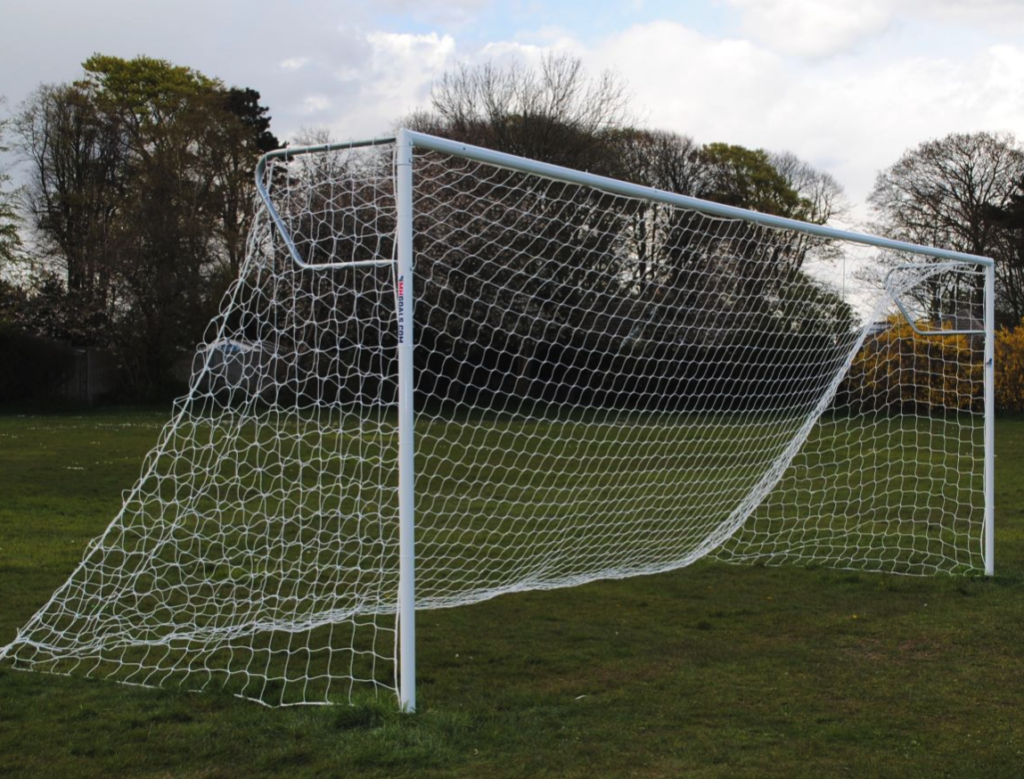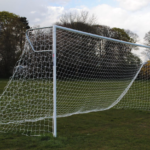How to Set Up a Full-Size Grassroots Football Pitch

If you play or coach grassroots football in the UK regularly, the chances are you’ll need to set up a pitch at least once. And when that happens, you need to know that you have the correct measurements, guidelines and football equipment to complete the job. That’s why we’ve created a guide on how to set up a full-size grassroots football pitch.
Use the Correct Pitch Dimensions
Before we start drawing lines and setting up goalposts, it's vital to know the right measurements. A football pitch isn't a one-size-fits-all; there are minimum and maximum measurements to keep in mind.
Standard Measurements:
Length (Touchline): This is the longer side of the rectangle. It can be anywhere between 90m at its shortest and 120m at its longest.
Width (Goal line): This is the shorter side of the rectangle. The narrowest it can be is 45m, and the widest is 90m.
For Big Matches:
Sometimes, for international matches or major tournaments, there are specific sizes we have to stick to. In these cases, the length should be between 100m-110m, and the width should be between 64m-75m.
Remember, while these measurements give some flexibility, it's crucial to ensure that the pitch size is suitable for the players' age and skill level.
Mark the Pitch Correctly
Once you have the correct measurements in place, you can mark out the pitch if necessary. This is the fun bit where we draw the lines that help guide the game. You'll need a few things to get started.
What you’ll need
- White paint that's specially made for grass.
- A machine or tool to help you mark straight lines. This is called a line-marking machine.
- Measuring tapes for precision.
- Pegs to mark specific points on the field.
Halfway Line: This line divides the pitch into two equal parts. It's drawn across the width (goal line to goal line).
Centre Circle: This is a big circle right in the middle of the pitch. It has a radius of 9.15m.
Quarter Circles: At each of the four corners of the pitch, there's a small quarter circle for corners. This has the same 9.15m radius as the centre circle.
Penalty Areas and Goal Areas: Penalty Area: The box is 40.3m wide (that’s the entire goal line width) and extends 16.5m out from the goal line into the pitch.
Goal Area: The goal area inside the penalty box is 18.3m wide and extends 5.5m out from the goal line.
The Goalposts
Football goals are when the action is. It's where shots are directed, saves are pulled off, and most crucially, where points are scored. Not only do you need the right size, but you also need to ensure your football goals are fit for purpose.
Goal Dimensions
Height: The distance from the ground to the top of the crossbar should be 2.44m.
Width: The distance between the two vertical posts should be 7.32m.
Materials and Equipment Needed:
- Robust goalposts and a crossbar, typically made from metal or durable plastic.
- A net, which stops the football when a goal is scored.
- Ground anchors, pegs, or weights to firmly secure the goal in place.
- A hammer, for ground pegs.
- Cable ties or net clips for attaching the net.
Of course, you don’t need to go hunting for these items individually. The professional football goals available from The Soccer Store come with all the parts and accessories needed to install them safely and securely.
Goalpost Safety
Permanently-sited goalposts are usually compulsory in FA-affiliated 11-a-side matches. While they’re sturdy and hard-wearing these days, they can be dangerous if they’re not installed correctly or the necessary safety precautions aren’t followed.
Stability: Always make sure the goalposts are securely anchored to prevent them from tipping over.
Regular Checks: Inspect goalposts for wear and tear, especially if they're movable. Rust, cracks, or other signs of damage can weaken the structure.
Padding: In some settings, especially youth games, adding padding to goalposts can help prevent injuries.
Other Items You Will Need
So, you’ve completed your basic football pitch set-up. Everything else is icing on the cake. If you want to separate your area from others in the vicinity, consider using football pitch barriers to keep spectators, staff and players apart.
Professional pitches include corner flags, as they clearly identify the playing boundaries and determine whether balls have gone out of play for a throw-in or corner/goal kick.
And that’s it. Unless you’re also in charge of pitch maintenance, you’re good to go. You can set up a professional football pitch from scratch.

